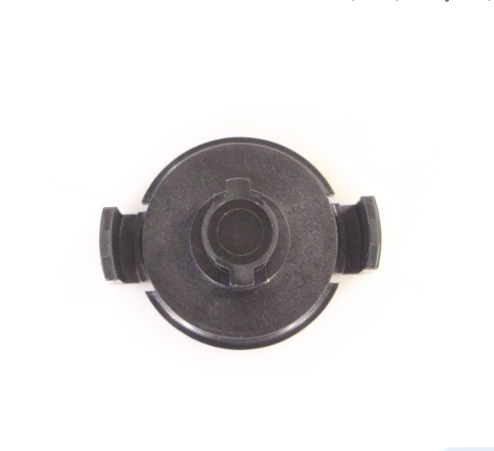rear transfer case seal
Understanding Rear Transfer Case Seal Importance and Maintenance
The rear transfer case seal is an essential component in vehicles equipped with all-wheel drive (AWD) or four-wheel drive (4WD) systems. Its primary function is to prevent lubricant leakage from the transfer case, which is crucial for maintaining the efficiency and longevity of the drivetrain. As vehicles endure various driving conditions, understanding the significance of the rear transfer case seal, along with proper maintenance practices, can help transportation professionals and everyday drivers alike ensure optimal performance.
What is a Transfer Case?
Before delving into the specifics of the rear transfer case seal, it's essential to understand what a transfer case is. The transfer case is a gearbox situated between the transmission and the drive axles, enabling power distribution to all four wheels. This system is vital for enhancing traction, improving handling, and providing improved stability, especially in challenging road conditions like snow, mud, or steep terrains.
The Role of Rear Transfer Case Seal
The rear transfer case seal is designed to keep transmission fluid contained within the transfer case. This seal is critical for several reasons
1. Fluid Retention Transmission fluid lubricates various components within the transfer case. If the fluid leaks due to a compromised seal, it can lead to insufficient lubrication, causing wear and tear on moving parts.
2. Heat Management The transfer case generates significant heat during operation. The lubricant helps to dissipate this heat, preventing overheating. A leak can hinder this process, risking potential damage to the transfer case.
3. Preventing Contaminants Apart from retaining the lubricant, the rear transfer case seal acts as a barrier against dirt, dust, and other contaminants. These contaminants can lead to corrosion and affect the transfer case's overall performance.
Signs of a Failing Rear Transfer Case Seal
Recognizing the signs of a failing rear transfer case seal early can save drivers from costly repairs and potential breakdowns. Here are some common indicators of seal deterioration
- Fluid Leaks The most apparent sign is the presence of transmission fluid pooling beneath the vehicle. If you notice red or brown fluid spots on your garage floor or driveway, it’s essential to inspect the transfer case.
rear transfer case seal

- Unusual Noises If you hear grinding, whining, or clunking noises when operating the vehicle, it could indicate that the transfer case is low on fluid due to a leak.
- Warning Lights Many modern vehicles are equipped with sensors that can alert you to low fluid levels. If your dashboard displays any warning lights, it's crucial to investigate further.
- Handling Issues If you experience a decrease in traction, acceleration delays, or difficulty engaging the four-wheel drive, these could also signal a problem with the transfer case or its seal.
Maintenance and Replacement
Routine maintenance is key to ensuring the longevity of the rear transfer case seal. Here are some recommendations
1. Regular Inspections Periodic checks can help catch potential issues before they escalate. Look for any signs of leaks, and ensure that the fluid levels are within the recommended range.
2. Fluid Changes Over time, the transmission fluid can degrade, becoming less effective at lubricating and protecting components. Following the manufacturer's guidelines for fluid replacement is critical for sustaining seal integrity.
3. Addressing Leaks Promptly If a leak is detected, addressing it immediately is vital. Continuing to drive with a compromised seal can lead to significant damage that may require major repairs.
4. Professional Assistance If you're unsure about the condition of your rear transfer case seal, consulting with a professional mechanic can provide peace of mind and ensure proper maintenance.
Conclusion
In conclusion, the rear transfer case seal is a vital component that plays a significant role in the overall performance of a vehicle’s drivetrain. Being proactive about maintenance, recognizing early signs of trouble, and addressing repairs promptly can enhance your vehicle's lifespan and performance. Regular attention to this often-overlooked part can lead to smoother drives, better handling, and fewer unexpected repair costs in the long run.
-
Understanding the Front Main Engine Seal: Purpose, Maintenance, and Installation
News Jul.29,2025
-
Understanding O-Rings and Seal Rings: Types, Applications, and Custom Solutions
News Jul.29,2025
-
Understanding Crankshaft Oil Seals: Rear Seals, Pulley Seals, and Their Role in Engine Integrity
News Jul.29,2025
-
The Importance of Front and Rear Crankshaft Seals in Engine Performance and Oil Management
News Jul.29,2025
-
Crank Oil Seals: Functions, Types, and Cost Considerations in Engine Maintenance
News Jul.29,2025
-
A Comprehensive Guide to O-Rings and Seals: Types, Materials, and Global Applications
News Jul.29,2025
-
Mastering Diesel and Performance Engine Maintenance: A Guide to Critical Oil Gaskets
News Jul.28,2025
Products categories















